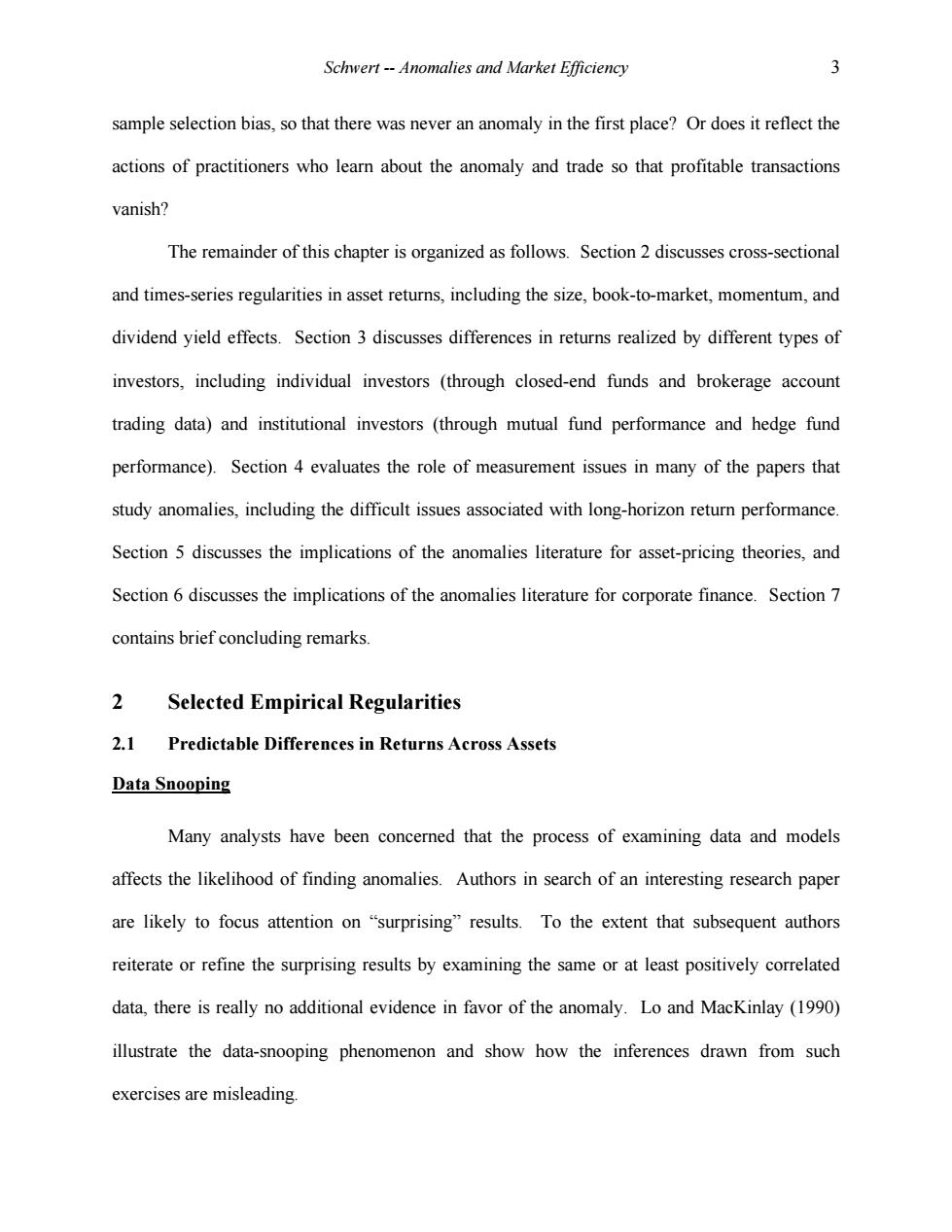正在加载图片...

Schwert--Anomalies and Market Efficiency 3 sample selection bias,so that there was never an anomaly in the first place?Or does it reflect the actions of practitioners who learn about the anomaly and trade so that profitable transactions vanish? The remainder of this chapter is organized as follows.Section 2 discusses cross-sectional and times-series regularities in asset returns,including the size,book-to-market,momentum,and dividend yield effects.Section 3 discusses differences in returns realized by different types of investors,including individual investors (through closed-end funds and brokerage account trading data)and institutional investors (through mutual fund performance and hedge fund performance).Section 4 evaluates the role of measurement issues in many of the papers that study anomalies,including the difficult issues associated with long-horizon return performance. Section 5 discusses the implications of the anomalies literature for asset-pricing theories,and Section 6 discusses the implications of the anomalies literature for corporate finance.Section 7 contains brief concluding remarks. 2 Selected Empirical Regularities 2.1 Predictable Differences in Returns Across Assets Data Snooping Many analysts have been concerned that the process of examining data and models affects the likelihood of finding anomalies.Authors in search of an interesting research paper are likely to focus attention on "surprising"results.To the extent that subsequent authors reiterate or refine the surprising results by examining the same or at least positively correlated data,there is really no additional evidence in favor of the anomaly.Lo and MacKinlay (1990) illustrate the data-snooping phenomenon and show how the inferences drawn from such exercises are misleadingSchwert -- Anomalies and Market Efficiency 3 sample selection bias, so that there was never an anomaly in the first place? Or does it reflect the actions of practitioners who learn about the anomaly and trade so that profitable transactions vanish? The remainder of this chapter is organized as follows. Section 2 discusses cross-sectional and times-series regularities in asset returns, including the size, book-to-market, momentum, and dividend yield effects. Section 3 discusses differences in returns realized by different types of investors, including individual investors (through closed-end funds and brokerage account trading data) and institutional investors (through mutual fund performance and hedge fund performance). Section 4 evaluates the role of measurement issues in many of the papers that study anomalies, including the difficult issues associated with long-horizon return performance. Section 5 discusses the implications of the anomalies literature for asset-pricing theories, and Section 6 discusses the implications of the anomalies literature for corporate finance. Section 7 contains brief concluding remarks. 2 Selected Empirical Regularities 2.1 Predictable Differences in Returns Across Assets Data Snooping Many analysts have been concerned that the process of examining data and models affects the likelihood of finding anomalies. Authors in search of an interesting research paper are likely to focus attention on “surprising” results. To the extent that subsequent authors reiterate or refine the surprising results by examining the same or at least positively correlated data, there is really no additional evidence in favor of the anomaly. Lo and MacKinlay (1990) illustrate the data-snooping phenomenon and show how the inferences drawn from such exercises are misleading